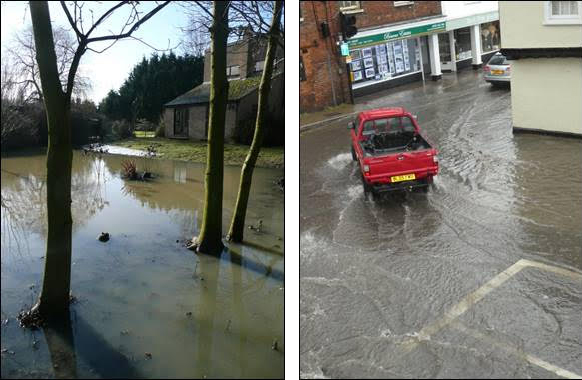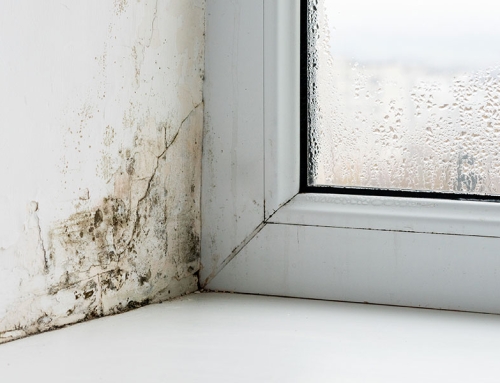As the rains of Autumn begin, many people will start to think about the excessive rainfall we have experienced in the UK over recent years. Flood risk associated with climate change is thought to be increasingly serious and from the number of disasters occurring year upon year, this certainly seems to be the case. There are an estimated 2 million properties classified at risk in England alone and those built on a flood plain seem to want to deny the potential for disaster until tragedy strikes. Some fall foul of changes to the local environment, others are subject to ‘acts of God’ or ecological disaster, but many are simply due to idiots who continue to build in areas which flood. The old surveyor’s maxim is that if it has flooded before, then it is going to do so again; it is not a case of ‘if’, just ‘when’.
If there is a stream or water course running through a site, then riparian rights under English common law probably exist. This allows an owner to fish up to the middle of the water course, but it also conveys responsibility for water bank maintenance. This means that a riparian owner must keep those banks clear, not letting trees or bushes obstruct the water course, and so allowing water to pass without obstruction. Local Authorities manage flood risk and the Environment Agency develops risk management strategies (Flood and Water Management Act 2010), but much of the responsibility for maintenance still comes down to the owners. The only problem with this arrangement is that it only takes one idiot upstream to ignore their responsibilities (or do something stupid) and those downstream suffer. In the urban envelope, new building developments can involve material changes to field ditches or streams which, in turn, will affect water dispersal. This can be something seemingly harmless – like digging out waterways or adding conduits – which then disperses water far more quickly, creating a cascade effect which overwhelms banks further downstream.
Often, damage from flooding occurs in the least expected ways: one instance of this is the effect on the foul sewer system – and effluent backing up and into the home is distressing to say the least. A septic tank or cesspit sited where there is a high water table, or in an area liable to flooding, where field drains will not allow the outpour to percolate away, can lead to a backwash into the tank and in the worst case scenario, flood the house with effluent. We have seen instances of septic tanks submerged under water and owners questioning why the tank has ceased to work – the answer is not really rocket science!
Ownership of a water course is important in establishing maintenance responsibility. Boundary presumption – the old hedge and the ditch rule – suggests that a waterway belongs to the land behind the hedge. The theory is that the person who dug the ditch would have been on their own land when they did it, so piled the soil spoil behind them and then planted the hedge on top – ergo, the ditch is their land. Flooding is often caused when watercourses are allowed to fall into disrepair. In southern Cambridgeshire and northern Essex, there is a chalk sub soil and many ditches are dry for most of the year. Then, in inclement conditions, water pours down from the shallow valley sides in a torrent. The flooding caused to low-lying areas is often due to blockages creating dams which back the water up. Usually, this is because the waterways are overgrown or debris has washed downstream – occasionally this turns out to be livestock, such as the odd sheep or deer, caught out by the ferocity of the downpour. One elderly lady we encountered had purchased an old town centre cottage with a rear garden that backed onto a dry stream. When the rains came, the deluge washed away a boardwalk terrace she had built out over the stream without consent. Enraged, she lambasted the authority, only to discover they had been searching for the culprit who had caused severe flood damage to fifteen other homes nearby. It turned out to have been the timbers of her jetty, washed away downstream, that had created the dam and the subsequent flooding!
It could be argued that a surveyor really needs to walk any water courses crossing – or forming the boundaries – of a site. However, this is impractical when ditches are overgrown or have water in them; getting covered in mud, or stuck in a river is not a sensible idea. However, a surveyor should search for indications of past flooding and this requires some understanding of water distribution in the local area. Tide line marking is one such indicator, high damp meter readings are another (due to the fabric having become saturated). Checking flood plain maps prior to visiting a site also provides a reasonable indication of what to expect. Artesian basins, springs, lakes and ponds, the water table level, trees which consume high volumes of water (such as willow) might be looked upon as warnings. A sump pump in a cellar may just be good practice but it is normally an indication that water has penetrated in the past. You can often work out the likelihood of flooding by studying the topography, location and orientation of the property within its environment and relationship with physical water elements nearby. Although nothing is better than local knowledge, common sense is also important. Therefore an old farmhouse, sited on high ground, has probably been built there to avoid flooding, but the barn conversion in the farmyard, or on lower ground nearby, may be quite another matter.
Old ditches were dug for a reason and if they have been filled-in or blocked-up are just problems waiting to appear. Water courses need to be kept clear and the banks stabilised, culverts should only be formed with suitably-sized pipework and any deadfalls, including those downstream on a neighbours land need to be cleared. Major works affecting a water course require consent. A ditch higher than the surrounding land obviously has the potential to break a weak bank or overflow and flood lower areas.
Even improvements to a water course upstream can radically affect the areas further down, especially when the channels prove unable to accommodate an increased flow, leading to water surge, plus the speed of movement and weight of the torrent exacerbating erosion.
Flooding in coastal areas due to erosion or storm surge is outside my general experience, so my observations here apply mainly to inland areas. There are several forms of flooding inland. The main ones are:
Pluvial Surface Water. This is very disruptive, can happen extremely quickly, be fairly localised – especially in urban jungles with extensive impermeable surfacing – and usually occurs when the ground is saturated after torrential rain. The high run-off from slopes and water courses then defeats the ability of drainage systems to disperse the deluge.
Snow Melt. Rather speaks for itself, but is normally at its worst when fallen snow thaws rapidly. Flooding can also occur when the ground is frozen and unable to absorb moisture.
Fluvial Water Course. This is where the water course cannot accommodate the water surge so flooding occurs to the surrounding area and flood plains.
Groundwater Flooding. Water coming up through the floor rather than in from under the door is rather disturbing – and that is groundwater flooding. It is most common in spring or late autumn, being mainly due to water forcing up through the underlying rocks and is rarely caused by a single weather event. Narrow river valleys with permeable surface deposits (such as those in Oxford) or chalk outcrops are very prone to this.
Recent news items have highlighted the Building Research Establishment’s development of what is termed a flood-resilient house – the basic principal being to stop water from getting into the envelope of the building. Amongst other things, this is managed through:
An automatic sump pump which operates when water invades and then pumps it back outside.
Bath, shower and toilet facilities which have one-way valves fitted to prevent sewer flood discharging back into the home.
Sealed surrounds for doors and windows.
Water-resistant walls.
Membranes within the floor and walls to channel water towards the drains and sump pump.
All rather exciting, but one must suspect this will be as difficult to incorporate within an existing ancient building as is the desire to make old period dwellings sustainable. It is also likely to prove extremely expensive. This may be one way forward for brand new houses in threatened areas, but will it inevitably lead to increasing development in those disaster zones as a consequence? Maybe it would be better to adopt some of the recent Dutch innovations and build self-contained floating homes or suchlike? There remains a fundamental drawback however: none of these approaches are going to do much for the surrounding gardens, outbuildings, garages, sheds and so on, which are despoiled during the flooding, especially when they are also affected by contamination as sewers rise to mingle with flood water!






